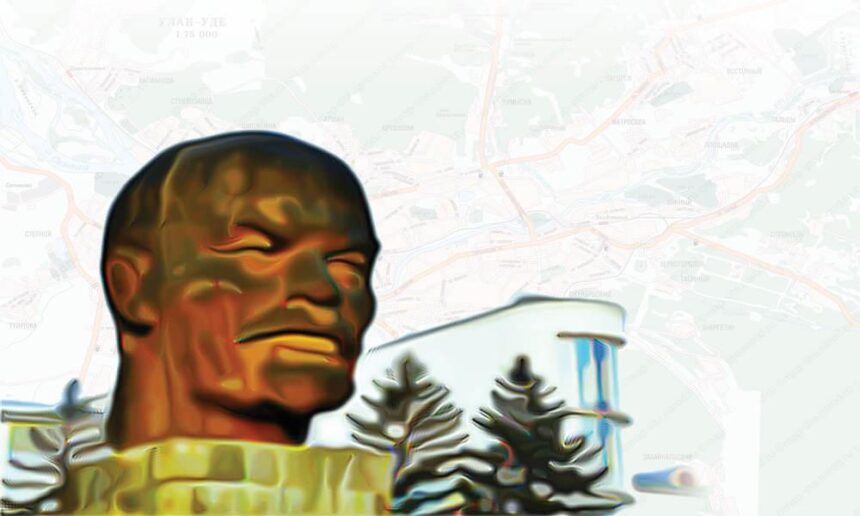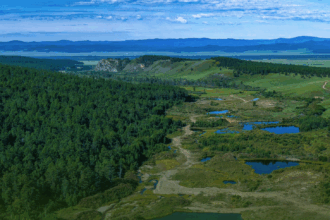Since visas were waived in September 2014, thousands of Russian and Mongolian citizens have been visiting each other’s countries. Such an increase in travelers has boosted tourism and trade on both sides of the border. Almost one-third of the 3,485km-long railway that connects us to our northern neighbor resides in the territory of the Republic of Buryatia. The Russian Federation consists of 83 federal subjects that have their own constitution, government, and language but do not have the status of an independent republic.
Buryatia has a territory that equals one-third of Mongolia, and a population of less than one million. Twenty-five per cent of the population are Buryats while the majority are Russians with a small percentage of other minorities. Only about ten per cent of the Buryats know their native language as the official language is Russian.
The Buryat government led by Aleksei Sambuewich Tsiidenow is currently doing a lot of work to diversify its economy and attract foreign investment. Lately they have an increased interest in working together with their neighbors Mongolia. Two weeks ago Tsiidenow paid a visit to Mongolia and had a meeting with our authorities and business and civic representatives. During this time he also attended the defacto interview.
Doing business in Buryatia
In 2011, the government of the Republic of Buryatia established a regional development fund and named it ‘Asia’s Door to Russia’ under a larger drive to attract foreign investment. Subsequently, they have developed plans to increase tourism on the eastern coast of Lake Baikal and built some of the required infrastructure. Also the Ulan-Ude airport has acquired the fifth freedom of international aviation, meaning planes from any country can pick up passengers from there.
The governments of Russia, Mongolia, and China have an agreement in place to build a modern highway connecting Eurasian locations Beijing, Ulaanbaatar, and Ulan-Ude. The Russians have nearly completed the road in Ulan-Ude and Kyakhta. They are calling for investment to build a manufacturing and logistics center along with required infrastructure next to the Gusinozyorsk station. This station comes up on the Trans-Mongolian road and railway before it connects to the main Trans-Siberian in Ulan-Ude. The authorities are granting land in Ulan-Ude for building districts of apartment blocks.
Buryatia has 48 per cent of Russia’s zinc reserves, 31 per cent of its molybdenum, 24 per cent of its lead, and 20 per cent of its wolfram. Therefore, mineral and non-mineral mining is increasingly earmarked for development. Also, the authorities are granting land and soft business conditions for agricultural and manufacturing complexes in poultry, dairy, and other industries.
Touring in Buryatia
1. Lake Baikal: Everyone knows that Lake Baikal is the largest freshwater reserve in the world, as well as the deepest (1,642m), making it a top tourist destination. The bottom of the lake on its east coast has a slope with relatively warmer water temperatures, allowing it to be an attractive location with a range of activities offered, including hiking, walking in the forest, and sightseeing on a boat. This is one of the reasons why the number of foreign and domestic tourists has been increasing every year. You can drive for two hours from Ulan-Ude along the east coast of the lake to reach a modern hotel named Baikal Riviera, which consists of nearly a dozen lodges that have Russian saunas inside.
Today half a million Mongolians are entering Russia through the Altanbulag port every year, and the vast majority is spending holidays at Lake Baikal. Starting from last summer, Mongolian aviation company Hunnu Air has been conducting Ulaanbaatar-Ulan-Ude flights (584 kilometers) at rates almost cheaper than getting on the train. This has transformed a 12-hour journey on the road into a more comfortable one-hour flight.
2. Sable: The Barguzin Nature Reserve, which was established in 1916, is located by the midpoint of the east coast of Lake Baikal. Fur from the sable that inhabits in this nature reserve was once the business card of the Russian Empire and was highly valued on international markets. This is where the protection of Barguzin sables started a hundred years ago. One of the reasons why Russia’s territory expanded so much to the east starting from the early 17th century was the enormous amount of resources Siberia had, which included the fur from Barguzin sables .
3. Hot basin: Buryatia has a plenty of hot springs, many of which have become the basis of resorts and therapy centers. If you drive one hour on the Ulan-Ude-Irkutsk M55 highway, you can enjoy a nice therapeutic break in a hot water pool with a depth of 1.5 meters and a temperature of 28 degrees Celsius. It is located in a town called Ilinka.
4. Semeyskie: In 1735 Russian Empress Catherine II deported 40,000 Russians to Eastern Siberia and to Zabaykalsk (which was followed by two other instances that saw thousands more people move with some on voluntary basis) because of their reluctance to conform to the Orthodox Church. At the time the Russian Empire was seeking to claim the Amur River basin from the Qing dynasty. A majority of the deported people made Buryatia home, working together on farms with Buryats who were already there. Because they came in large numbers with their families, these people were named ‘Semeyskie’. In the Russian history, their name is ‘Old Believers’ because they did not want to follow the Orthodox Church. For example, the Semeyskie retained old religious traditions such as praying using their two fingers, not three.
Today Novaya Bryan village in Zaigrayevsky District offers an opportunity for people to learn more about the Old Believers, their culture, tradition, and the hardships they endured over the years.
5. Ivolginskyi Datsan: Thirty-six kilometers to the west of Ulan-Ude, you can visit a Buddhist templewhich was built in 1945 with donations from believers in the Ivolga Valley. This was the first temple that was built after Russian communists burned down all of Buryat temples in the 1930s. Today this temple has reinvigorated Buddhism in the region. In 1927 the 12th Hambo Lama Itgel was buried in a box made of pine as he originally instructed. Seventy-five years later his body had no signs of decay or decomposition. Since the body was relocated to the Ivolginsky Datsan, not only Mongolians but also thousands of people started visiting the temple to pray and pay their respects.
Ulan-Ude
2018.02.02












